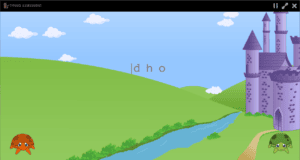Disclosure: This post contains affiliate links. I will earn a percentage of any sales made using my links, but there is no added cost to you. These purchases help keep the blog going.
Experts agree that at least 2 months of math and reading skills are lost over the summer months if preventative measures are not taken. That loss can be prevented with just 2-3 hours of concentrated review a week. Below are 4 ways how to beat the summer slide with options for reading, literature, math, and science. No matter if your student is early in their school career or getting ready to finish high school, summer slide prevention should be top of mind.
How to Beat the Summer Slide
1. Family Book Club
There are so many great literary classics that lend themselves to a family book club – Charlotte’s Web, The Mouse and the Motorcycle, Little House on the Prairie – just a few of my beloved childhood favorites. Pick a book, set a day and time, and help create a reading plan that the whole family can achieve. Choose whether to read the whole book first, or just a few chapters at a time to continue the discussion over several days or weeks. You can also Google the book title to search for book club questions relevant to the ages of your readers.
As a consultant with PaperPie (formerly Usborne Books & More), I’ve been introduced to some great new series for our middle-grade readers. And like the classics mentioned above, these make great titles for a family book club – appropriate for younger readers, but engaging for adults as well.
2. Online Math & Reading Apps
There are numerous free and freemium (free to start or for basic services) math and reading apps available for use on your phone, tablet, and computer. Some of our family’s favorites are Prodigy (math), Teach Your Monster to Read, and Epic (reading). Some paid programs that my family has used are Thinkster Math and Readability.
3. Workbooks
Math is the subject area where the most knowledge is lost during the summer. While it’s easy to work with younger students on counting, addition, and subtraction in everyday life, sometimes workbooks are needed to reinforce those more advanced skills. I love the Usborne math workbooks with their bright colors, fun graphics, and engaging content.
4. Sneak in Some Science
Summer is the perfect time to be outside and learn about nature. Plant a garden together. Experiment with different watering techniques, seed dispersement, and light. Or check out these books full of fun and easy experiments for all ages.
What are some of your favorite tips on how to beat the summer slide?


